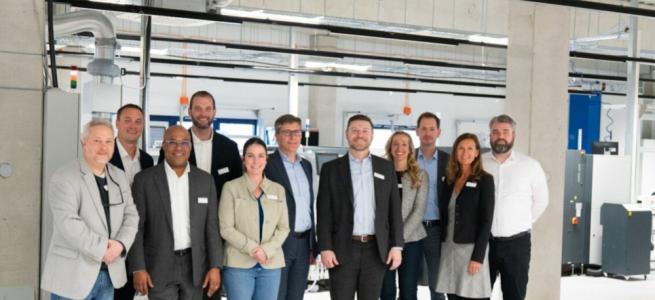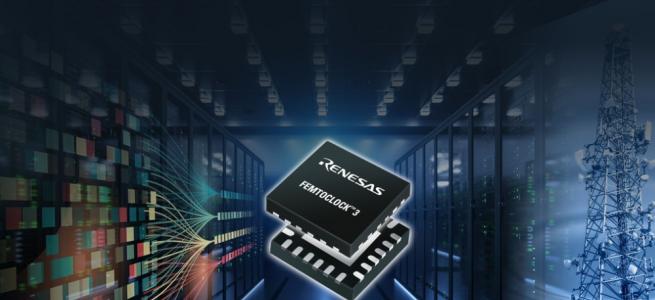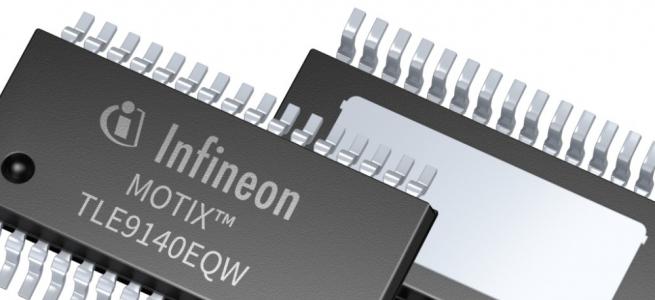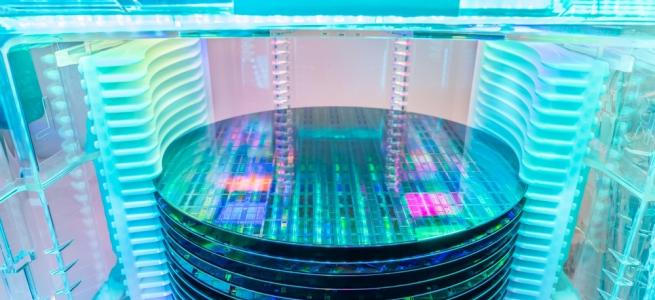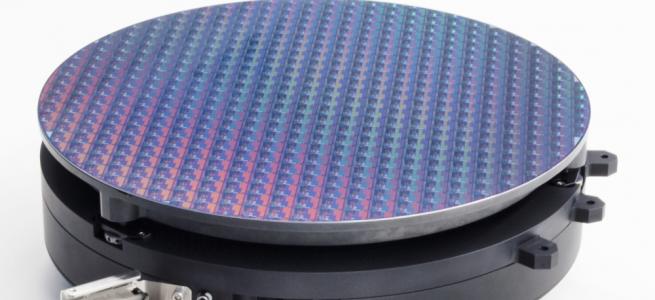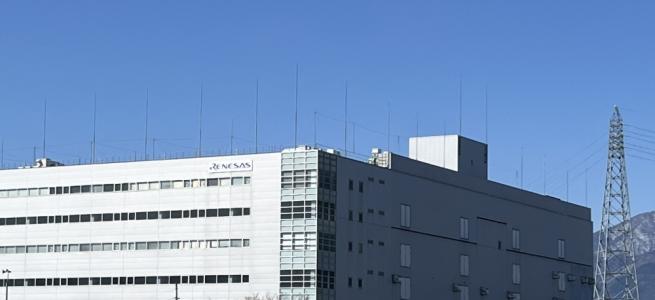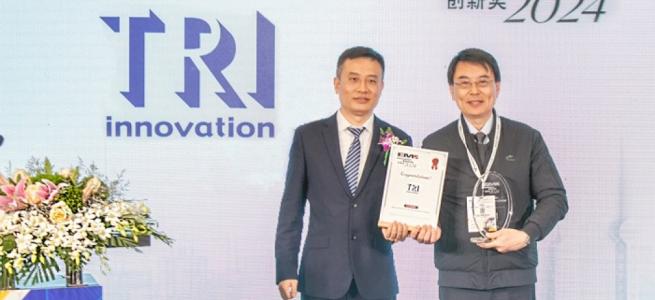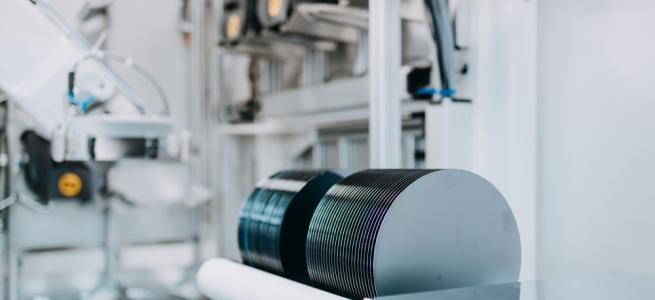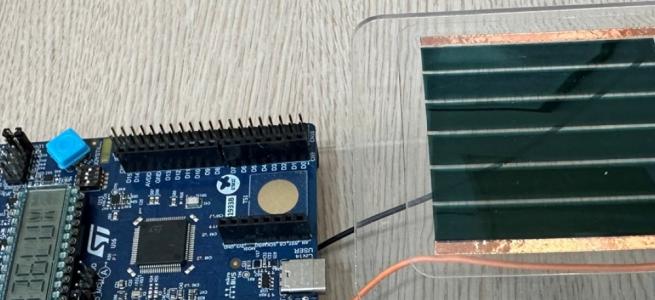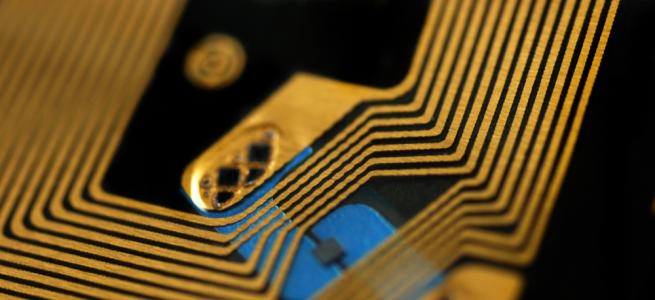Time to celebrate and accelerate diversity, equity and inclusion

Laura Silverstein, Technology Development Integration Engineer at
GlobalFoundries’ Essex Junction, Vermont facility, was recently
recognised as GF’s DEI in Inventorship Champion – awarded for hard work
in creating a new and more diverse generation of inventors. Silicon
Semiconductor Editor, Philip Alsop, finds out more about her career to
date, her current role at the company and her thoughts on diversity,
equality and inclusivity in the semiconductor industry.
PA: Have you always wanted to work in the semiconductor industry? And the second question, which might be answered by the first, is, what did you know about the industry before you joined it?
LS: I’ll admit I knew nothing about the semiconductor industry until I got the interview and got the job! My degree is in chemical engineering, and I heard there was a fab in the Burlington, Vermont area that was hiring chemical engineers. And I was looking for a technical job after my undergraduate degree and was excited to live in Vermont. So, I met up at the career fair and hit it off and interviewed, actually in New York, and then interviewed up here and started working at this fab right out of college. But I knew nothing about computer chip manufacturing at all. I wasn’t even sure if they cut up the wafers into chips, but I knew I probably shouldn’t ask that at that point!
PA: Were you looking at other industries’ opportunities, or was this more or less the first thing that you came across?
LS: I was looking at some consulting jobs, also I had done internships in biomedical pharmaceutical companies, so I had been looking at that as well. Sometimes things fall into place and you’re like, okay, I’m clearly meant to go in this direction. And that’s kind of how my job here at the fab came about. It just fell into place much more smoothly than the other things that didn’t seem to be quite as good a fit at the time.
PA: What is your role at GlobalFoundries? Are you still doing the job that you were hired to do or have you moved on?
LS: I started as a process engineer and was in that role for about seven years. And it was great because our process engineers have technicians that have a lot of background that they work closely with. It was nice to have that working relationship with folks who had a little bit more experience than me. And then at that point, I decided I wanted to get better at data analysis. My degree is not in electrical engineering, so I didn’t have a lot of background on device performance or anything. But we were doing some CMOS image sensors in this lab and I decided, okay, I can understand if you take a picture in the dark, there’s a bright spot.
Take a picture in the bright, there’s a dark spot. So it was my way to make my transition into that data analysis, by getting my head around it. And it did a characterization for that for a couple of years and then worked on some other products, some of our 90 nanometer, some RF. And then about eight years ago, I moved into technology development when this fab became part of Global Foundries. And I’ve been in our technology development for the past eight years. And I love doing new technologies, new features, getting to run a lot of experiments. And right now I’m working on some of our GaN programme. So that’s been a fun challenge here as well.
PA: You’ve always worked in the semiconductor industry, and you have your college experience before that. In terms of how you found the environment - the semiconductor industry, and certainly the broader IT industry is characterised as being fairly male dominated. When you arrived, were you surprised at how few, or maybe even how many women there were in the industry? Your initial thoughts as to when you joined the industry?
LS: In college, actually, my chemical engineering major, I think it was 16 females and 10 males. I actually came from a pretty nurturing college environment. And really my first notice of it was when I started, when you’re new, you’re trying to figure out what you’re supposed to wear, what do other people wear to work? And I looked around and realised, oh, there’s enough women to have that baseline. I guess I have some flexibility. But yeah, I would say we were pretty not always the only, but one or two or three a lot of the times in meetings through my early years.
Right now I’m actually in a department that I think is 50:50 in technology development integration that has a good, strong female representation, which is pretty exciting. But for the most part it was more of just that, oh, okay, I guess I get to be a little bit more flexible. There’s not a uniform because there’s a little bit more variety.
PA: Expanding on the point, have you found any challenges in the workplace? Do you think that any were at all related to the fact that you were a woman in a male dominated environment, or has the company had, as far as you can see, a fairly enlightened and diverse approach to employees? Any experiences, thoughts you want to share on that?
LS: Yeah, I think whenever you’re a new engineer coming into an area and people are looking for your decisions and you’ve only been there a year, it’s a little intimidating. One of the things that I remember laughing about when I was new is at one point I was working with three technicians who are all male, who are all taller than 6ft, and I was just five three, five four. And so a couple of times I’d be walking down the hall to a meeting and it would be me with my three six foot coworkers with me. I felt like I had some pretty strong backup!
But to be honest, I think part of that has been living and working in the Northeast United States. A lot of my colleagues are supportive of their wives’ careers, take time off for childcare, leave work early for school sports. So I think part of it is, from a gender perspective, being in the Northeast United States has made it very normal and has not had that much of a challenge related to gender. And certainly while it wasn’t a heavily female environment, I wasn’t the only one. There were plenty of other women around who’ve gone through maternity leave or asking for part time schedules for that and created this culture where it was normal and accepted and not that much of a challenge.
PA: Have you noticed at all during your career, then, with GlobalFoundries any differences, any improvements? It sounds as if it was a pretty positive environment to start with, but have you noticed things have got even better from that starting point? And does the company run specific initiatives around diversity or equality?
LS: Yeah, the biggest one for me that I’m really excited about, I had my son almost four years ago in 2019. At that point, my leave was just the standard six weeks short term disability. And then I took some time off, unpaid, under FMLA, to be home for three months before working about four days a week when I returned.
And now GlobalFoundries is up to 20 weeks maternity leave. Just huge. I mean, that’s a huge change for the positive - that support and also some pretty generous paternity leave, which a lot of my colleagues have taken when they’ve had children in their families. So that’s been a huge step forward that I’m really excited about for my colleagues, GlobalFoundries also has a great global women programme. They have regional and local conferences that have been really helpful. There was one, I think, in February of this year, and one of the things that I really liked is they talked about visualising your goals. And so one of the things I wanted to work on more was doing a better job of patenting and okay, I really need to start working with a patent group. And one of the questions they asked as they went through this goal visualisation was, okay, now who can help you with that?
And it was great because I hadn’t thought about, okay, if I want to start a patent group, I don’t have to reinvent the wheel. I have some colleagues who’ve done this, so I picked their brains about what are your best practices, how many people, how often do you meet? And it was just a good initiative to kind of get the momentum going, to look at it in that perspective that I found really helpful. Global Women has also had a strong presence at the National SWE (Society of Women Engineers) conferences. Two years ago I attended remotely due to COVID. I didn’t feel comfortable travelling at that point. My son wasn’t vaccinated yet, but this past year I was able to attend in person the National SWE Conference and was a co-speaker of a session with a colleague. And GlobalFoundries was really supportive of us as we brainstormed our idea and went through that process. So I really appreciated that as well, my chance to network and meet up with other colleagues.
PA: And in terms of where we are and where we perhaps need to end up, are there any things you can think of that you would like to see happen or need to improve or it sounds as if there’s quite a lot of positivity, certainly at GlobalFoundries. So, is it just doing more of the same and just increasing that, or do you think there are any sort of step changes that still could be made in terms of changes for the better, for equality and diversity?
LS: Well, I think that the ramifications of COVID in the workplace and that flexibility of home versus in the office are profound for families, and that increased flexibility has been great, amazing. One of the things I appreciate about the semiconductor industry, especially when you’re working in a 24/7 fab, is while it’s important to have a good amount of your working hours while colleagues are there so you can engage with them, it’s not impossible to work off hours because the fab is open.
The FA teams, the failure analysis teams are there, working. There’s folks, if you want to set up an experiment, somebody can run it for you at any time of the day. So that’s an opportunity, it’s a plus and a minus, but there is a positive for that flexibility to work your schedule around your time. One of the areas that’s been key for me that I’ve really valued between my son was born until he was three, both my husband and I worked 80% time, so we each took a day off a week and it’s amazing what one day a week does to get rid of that parental guilt part!
So it’s fantastic. And I really felt privileged to do that and supported. But I do think there’s still some room to grow the flexible work programmes. Not just the offering of them, but also the uptake and people who take advantage of that. Because for me, it was really valuable to have that time to get rid of that parental guilt stage. So those are the directions I think there’s some room for growth in.
PA: And in terms of role models, when you arrived in the industry, were there any senior women that you thought, yes, there’s someone I can aspire to, or there may have been a male role model that helped you find your feet? More generally in the industry, is it fair to say that at the moment it’s not obvious that there are that many female role models? Certainly, when you get beyond a certain level within an organisation, whenever you see people in the news or reported in magazines, it generally tends to be a male individual that’s doing the talking because they’re the CEO. What do you see as that picture for role models and perhaps what needs to change in terms of the boardroom?
LS: That’s a challenging one. For me, the places where I found the most help as a newer engineer were colleagues who were near retirement. There’s something about a colleague who’s near retirement that is really interested in helping new hires come up to speed, very free to speak their own mind. So, I had a lot of value from some coworkers who are all, in retrospect male, but especially those who are near that retirement stage, of really being able to lend some advice and create some good relationships with that.
And the other part that’s been really powerful me is peers. For me, peer mentoring kind of sometimes doesn’t get as much recognition as it deserves and when I took my job in technology development, part of the reason I did was because a coworker had started working there - a peer - and said, hey, this area is great, you should apply, there’s an opening. And I think there’s something to be said for that coworker peer sort of guidance, because there’s a good amount of power on that, not just mentors. From a mentoring perspective, otherwise, I think GlobalFoundries actually is doing a great job of encouraging women in management roles.
I do see a lot of my peers, or even engineers who’ve started, say, ten years after me, making headway in that sector. One of the reasons I’ve tried to stay in a technical role is I haven’t seen as many females advancing in that sort of technical role and there’s a few that have since retired that I really did admire, but a little bit harder to find. But right now, Isabelle Ferain, I think she’s leading Fab8 right now from Germany. She is fabulous. If you ever get a chance to talk to her, she’s really great. And I got a chance to meet with her at the Global Women Conference two years ago and by the time I woke up the next morning she had sent me a note saying thanks to me for meeting you and she’s just really fantastic. So, it is valuable to have those females out there and that the Global Women Conference has been a really valuable way for me to meet some of them within GF.
PA: Quickly back to the education side. It sounds like on your course there was an even spread or even the women were in the majority over the men. But do you think there’s more that needs to be done on the education front to convince women and diverse groups that the IT sector and the semiconductor space is for them or do you think it’s happening naturally?
LS: One of the things that I think that I love most about the semiconductor industry is that it’s so complex nobody can know it all. It’s impossible. You can’t possibly know every detail of every piece of equipment that’s used to make every device and every level and how it’s working. One of the things that I don’t think we promote or talk about much is just how much of it is that collaboration, of people bringing their own skills to the table and collaborating and getting the right people in the room that have the different pieces of the pie.
And it’s something that’s hard to capture in the education system because you basically all have the same background when you’re in classes together so you’re not bringing different things to the table.
As I’ve been thinking about this question recently, I think there’s a room for kind of trying to think about that cross disciplinary and that power of communication because that is, I think, a differentiator in this sort of technical world, that ability to work with people who you might not be speaking the same language with. And sometimes I think women and people from diverse backgrounds might have more experience trying to speak the language of people as opposed to always being within their same group and they can bring a lot to the table in that sort of collaboration environment.
When you’re in something like this, nobody can do it alone, no one can know every detail. I don’t know how to do that. But I’d really like to see that emphasised as really something to celebrate about this high-tech industry is the collaboration, the communication of technical information, but still you’re bringing your piece to the table. And how do we make sure that when we’re trying to talk about our different pieces that we’re still kind of finding that common ground and making the right decisions at that point?
PA: Maybe just a final question in terms of folks that might be looking to join the industry, whether they are still in college or they already started a career in a different industry. I suspect, having talked to you, you would certainly recommend that they join the industry. But any advice as to what to look out for as they’re looking for an opportunity within the sector?
LS: The big challenge with semiconductor industry is the cyclical nature. And I think that is something that can be hard to deal with as a new hire. When the industry is up, everything’s great. When you go through downturns. I mean, I graduated college in 2001, so not far behind the September 11 attacks, and the semiconductor industry definitely had a downturn within six months of me starting in the industry.
One of my pieces of advice is, whatever role you take, think about what you’re learning, make sure you know what you’re learning and think about how you can apply that in this job or in your next job. And always make sure that you’re learning. So, if you find yourself in a situation where you’ve been doing the same thing for five years and you’re not learning anymore, then it’s time to make sure you think about that next growth opportunity.
Because when you’re worried if you’re in a situation where you’re worried about layoffs or other workforce adjustments, I don’t know what they call them these days, but if you’re worried about that, I think by prioritising what you’re learning about in your role and how that would help you in this job or another job in the future, is a good way to help ease your mind over that stress.
And for me, that’s been really helpful to think about what I’m learning in every role I work in and what do you like about it, and just be really upfront with yourself, what you like about it, what you dislike about it, and that can help make decisions easier. I think the US-based manufacturing, it’s pretty exciting to work in it. It’s exciting to be able to do experiments, try new things. So those are some of the reasons I really do like the industry.
PA: And I guess, although you alluded to the ups and downs, overall, I think everyone, all the market analysts, say that it’s got to expand fairly significantly if it’s going to meet all these demands around AI, IoT, electric vehicles and the like. In general, it’s a pretty positive place to be?
LS: Yeah, I would agree. I think it’s nice to be part of that. It’s nice to be working on technology that, for the most part, is doing some really interesting things when you think about automotive these days or what we have in our cell phones. It’s really exciting to know that you’re part of that and have a product that you can reference, that you’ve been working on, that you’re not just moving money or consulting, you’re actually doing the work.
GlobalFoundries also has a great global women programme. They have regional and local conferences that have been really helpful.

